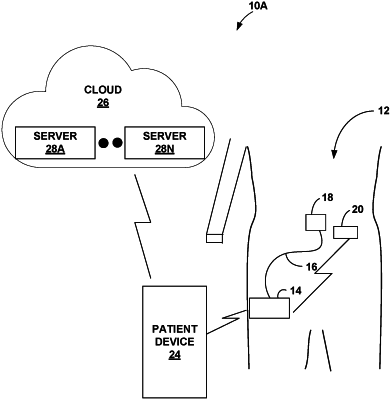| CPC G16H 20/17 (2018.01) [A61M 5/1723 (2013.01); G16H 40/67 (2018.01); A61M 2005/14252 (2013.01); A61M 2205/3327 (2013.01); A61M 2205/3553 (2013.01); A61M 2205/52 (2013.01); A61M 2230/201 (2013.01)] | 20 Claims |

|
1. A method for automatically configuring a medical device with user-specific configuration data, the method comprising:
determining, by a first medical device, that the first medical device is being placed into service to provide medical therapy to a patient, wherein the first medical device is a replacement medical device for a second medical device that was previously placed into service to provide medical therapy to the patient in accordance with user-specific configuration data stored on the second medical device, wherein determining that the first medical device is being placed into service comprises at least one of a group including:
responsive to receiving user input, establishing a communication link through which the first medical device obtains the user-specific configuration data;
determining that a first portion of the first medical device is removably attached to a second portion of the first medical device;
determining activation of a cannula insertion mechanism associated with the first medical device;
processing a signal from a skin contact sensor associated with the first medical device;
determining actuation of a mechanical switch between the first medical device and the patient; and
determining that a glucose sensor is in contact with interstitial fluid;
communicating, by the first medical device, data indicative of the first medical device being placed into service;
after communicating the data indicative of the first medical device being placed into service, obtaining, by the first medical device, the user-specific configuration data stored on the second medical device; and
configuring, by the first medical device, the first medical device to provide therapy in accordance with the obtained user-specific configuration data.
|